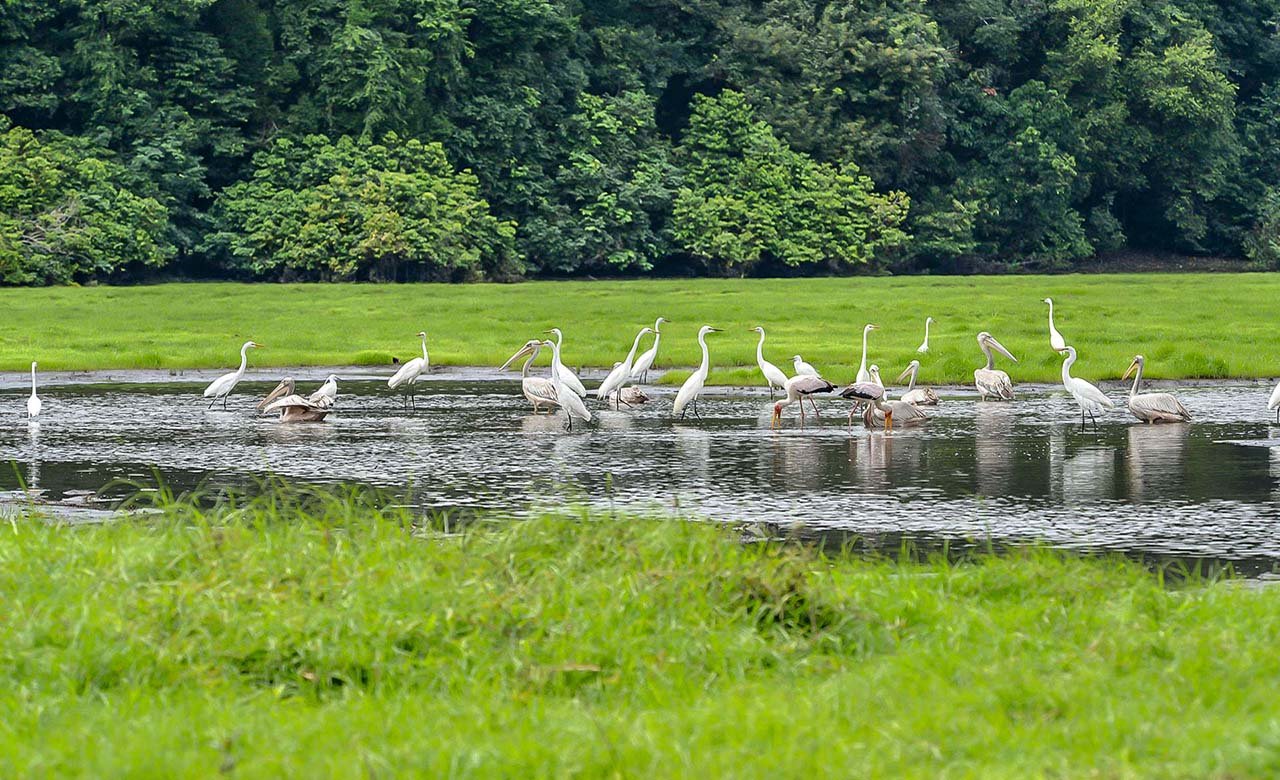Akanda National Park invites you to immerse yourself in the harmonious convergence of nature’s wonders, where migratory birds grace the skies, mangroves breathe life into the landscape, and the ebb and flow of tides create a symphony of stability in this coastal sanctuary.
Nestled in the enchanting northeast of Libreville, the capital of Gabon, and embraced by the Mondah and Corisco bays, Akanda National Park (French: Parc national d’Akanda) unfolds as a serene haven for migratory birds (including the frigate bird, Kelp Gull, and Black-headed Gull), set against the backdrop of lush green mangroves and thriving amphibians.
The rhythmic migration of these birds between the southern and northern hemispheres orchestrates a captivating spectacle, reaching its zenith in September when approximately 40,000 migratory birds gracefully traverse the park. The designated bird-watching zone in the northwest becomes a focal point for enthusiasts, while estuarine areas consistently host terns, swallows, and the majestic Osprey, drawing inspiration from the coastal bands of crabs parading along the beaches.
Established in 2002 as part of a visionary initiative by President Omar Bongo, Akanda National Park is a key player among Gabon’s 13 National Parks, conceived to mirror the country’s rich biodiversity and foster tourism. Encompassing Mangrove swamps, lowland evergreen forests, savanna patches, and extensive tidal beaches, the park sprawls across an impressive 540 square kilometers. In tandem with the neighboring Pongara National Park, Akanda boasts a substantial 2.5% of Africa’s entire mangrove swamp area.

The synergy of Corisco and Mondah bays creates a thriving marine ecosystem within the park’s boundaries. Corisco Bay emerges as a crucial feeding ground for turtles, while inputs from these bays, coupled with substantial annual rainfall reaching up to 3,300 millimeters, keep the region perpetually submerged. This constant inundation, combined with the regulating influence of the lush vegetation, ensures the stability of this natural sanctuary.
Akanda is a Ramsar Convention Wetland of International Importance and is a designated International Union for Conservation of Nature (IUCN) Critical Site. Its geographic coordinates, situated approximately 10 to 15 kilometers northeast and east of the capital, attest to its strategic location in preserving the country’s ecological tapestry:
- Latitude: 0°35′ to 0°40′ North
- Longitude: 9°26′ to 9°33′ East
Table of Contents
Access points to Akanda National Park:
- By river, departing from the docks located in Libreville and its surroundings: Ambowé, Malibé, Bambouchine.
- By land, using the road and track that connects Libreville to Pointe Bolokouboué via Cap-Estérias.
Note:
Permits are readily available at the ANPN (National Parks Board) office in Libreville. Access to the park is possible via pirogue, with daily rates starting from CFA100,000.
Akanda National Park’s Geological and Hydrographic Tapestry of Gabon
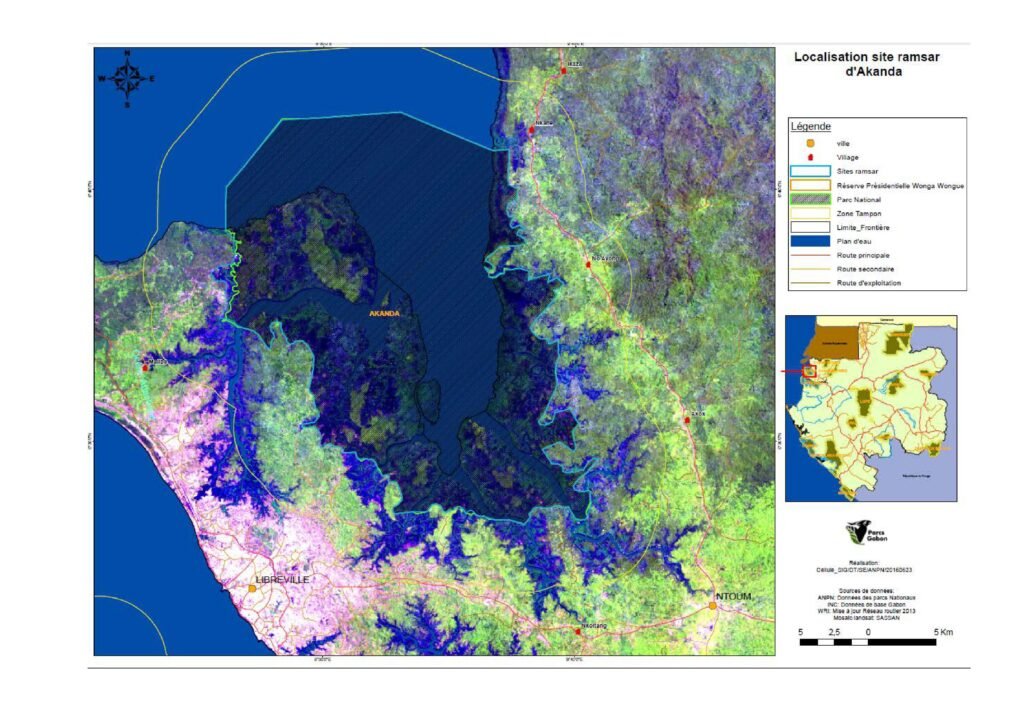
The predominant landscape of Akanda National Park has been shaped by a ria, a coastal inlet formed during the post-glacial rise of the Atlantic Ocean. With water depths generally not surpassing 10 meters, the intertidal zone hosts a dynamic blend of features, including pristine beaches, expansive mudflats, and thriving mangroves. Emerging from this coastal tapestry are solid islets, the most notable being Yomba Island, standing tall with its highest point reaching an elevation of 65 meters, as documented by Christy & al. (Undated).
Within the hydrographic network of Akanda National Park, the Nzémé, Moka, and Ntsini rivers take prominence. Although their flow rates are not notably high, their presence weaves through the landscape, contributing to the intricate network that defines the park’s geography. Despite their contributions, these rivers do not significantly alter the pronounced marine character of Mondah Bay, preserving the coastal essence that defines this natural sanctuary.
Delving into the geology of the region, the soils primarily consist of recent alluvium. Bedrock is exposed in various forms, including marl, limestone, and compact sands. In the western part of the bay, the bedrock belongs to the Upper Cretaceous, while in the eastern part, it corresponds to the Lower Cretaceous (Micholet et al. Undated). The beaches west of Pointe Akanda tend to be sandy, while those to the east and in the bottom of the bay are more muddy in nature. The central feature, Mondah Bank, occupies the bay’s center and proves challenging to access, characterized by non-structured soils, as documented by Christy & al. (Undated). This diverse geologic composition adds to the complexity and uniqueness of Akanda National Park’s landscape.
Akanda National Park: Historical and Cultural Insights
In the 16th century, the Estuary region of Gabon witnessed the arrival of its first inhabitants. During this period, the Mondah Bay area was predominantly occupied by the Séké ethnic group, also known as Sékyani. Over the course of the 19th century, the region underwent multiple cycles of migration, leading to a diverse ethnic composition that included Mpongwé, Benga, Séké, and Bakélé communities. In the latter half of the century, a notable migratory wave brought the Fang people into prominence.
As the Fang people grew in number, they expanded on both sides of the Komo Estuary, displacing neighboring communities. This migration compelled some clans to settle down, establishing villages along their routes, influenced by the leadership of King Denis Rapotchombo.
Archaeological Discoveries
The Mondah Bay and its surroundings have been inhabited since ancient times, with archaeological evidence indicating a history of occupation by fishermen and farmers dating back at least 5,000 years (Clist, 1995). Remains from the Neolithic period near the Moka River along the Mondah Bay suggest a timeline ranging from 5,000 to 2,100 years Before Present (BP).
In the National Park, traces of a more recent history are discernible, though poorly documented. Assimba Island bears remnants of a cannon and walls from the German military presence during World War I. Another nearby island reveals the barely visible remains of an old prison, still concealed under vegetation (RAPAC, 2007). Comprehensive studies are warranted to enhance our understanding of this history and confirm the archaeological and historical potential of the area.
Location of Villages and Populations:
As of now, there are no villages within the National Park. However, approximately twenty campsites dot the landscape, with one being permanently occupied. Originally owned by indigenous people for several generations, these campsites have witnessed an influx of Nigerian individuals since the eviction of Moka Island in 2012.
On the periphery of the National Park, numerous villages (around 40) and a few neighborhoods in the city of Libreville (Angondjé and Bikélé) contribute to the region’s population. Excluding major urban centers (Libreville, Ntoum, and Cocobeach), the estimated population in these areas exceeds 10,000 inhabitants, as per the latest General Population and Housing Census (RGPH, 2003) figures.
Flora and Fauna Diversity in Akanda National Park:
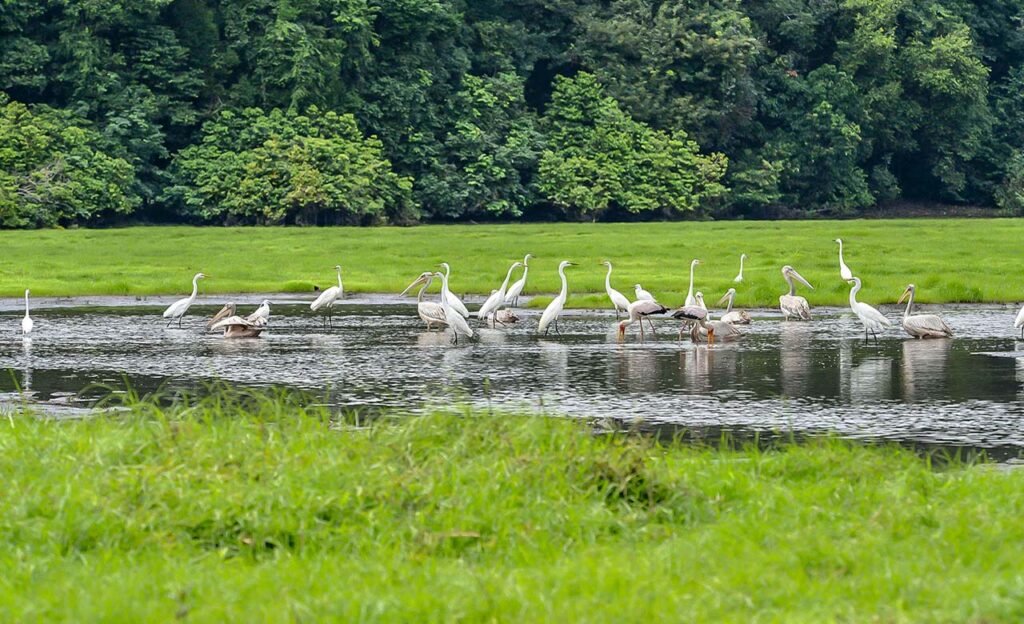
Flora:
Akanda National Park boasts a diverse and well-preserved array of ecosystems, including marine mangroves, mudflats, coastal vegetation, palm groves, and various types of forests. The park’s vegetation is representative of the Congo Basin and includes coastal thickets, sclerophyllous coastal forests, marine mangroves, marshes, swampy forests, palm groves, and Guineo-Congolian rainforests. These ecosystems harbor a rich variety of plant species, such as Dalbergia ecastaphyllum, Hibiscus tiliaceus, Ximenia americana, Chrysobalanus icaco, Rhizophora racemosa, Avicennia, Sindora, Phoenix reclinata, Aucoumea klaineana (okoumé), Sacoglottis gabonansis (ozouga), and more. The wet forest and thicket islands within the park are particularly noteworthy for their botanical significance, hosting rare or unique epiphytes.
Fauna:
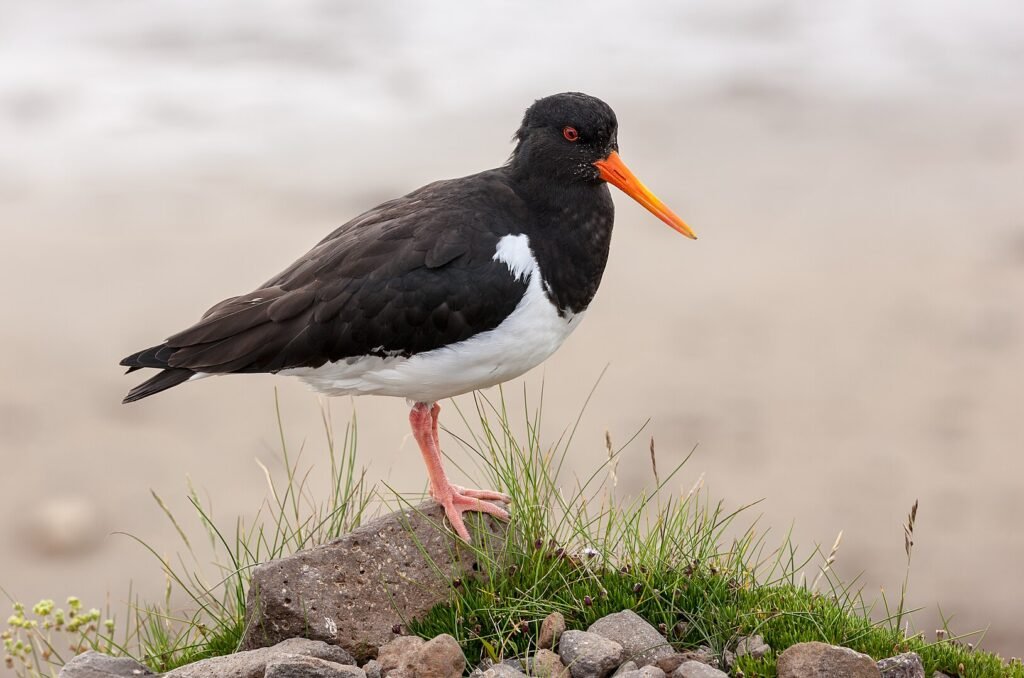
While Akanda National Park lacks large mammals like elephants and buffalo, it serves as a crucial conservation area for several internationally important species. The park provides a refuge for Atlantic humpback dolphins, green turtles, and the African manatee, albeit in small numbers and facing threats. Ornithologically, the estuarine forests are home to around 160 bird species, with the mudflats supporting a significant migratory or wintering population of Palearctic waders, exceeding 30,000 individuals. Notable bird species include the Northern pintail, Greater flamingo, Kentish plover, Eurasian oystercatcher, and others. The park’s role in supporting the passage and wintering of Palearctic waders is vital, representing a substantial portion of these birds in Gabon.

Additionally, Akanda National Park hosts a concentration of the threatened African skimmer, with one of the largest observed concentrations in Africa. The park also serves as a residence for three bird species nesting in the Ogooué delta during the non-breeding period: the little tern, African skimmer, and great egret. Flamingos have returned to the region after many years. However, the park faces challenges, as there is no large wildlife like chimpanzees or buffalo, and species like sitatungas and bushpigs are under significant hunting pressure due to their proximity to Libreville.
Animals Found in Akanda National Park:
- Atlantic humpback dolphins
- Green turtles
- African manatee
- Various bird species (approximately 160) in estuarine forests
- Northern pintail
- Greater Flamingo
- Kentish plover
- Eurasian oystercatcher
- Others
- Significant migratory or wintering population of Palearctic waders (exceeding 30,000 individuals)
- African skimmer (with one of the largest observed concentrations in Africa)
- Little tern
- Great egret
- Flamingos (returned to the region after many years)
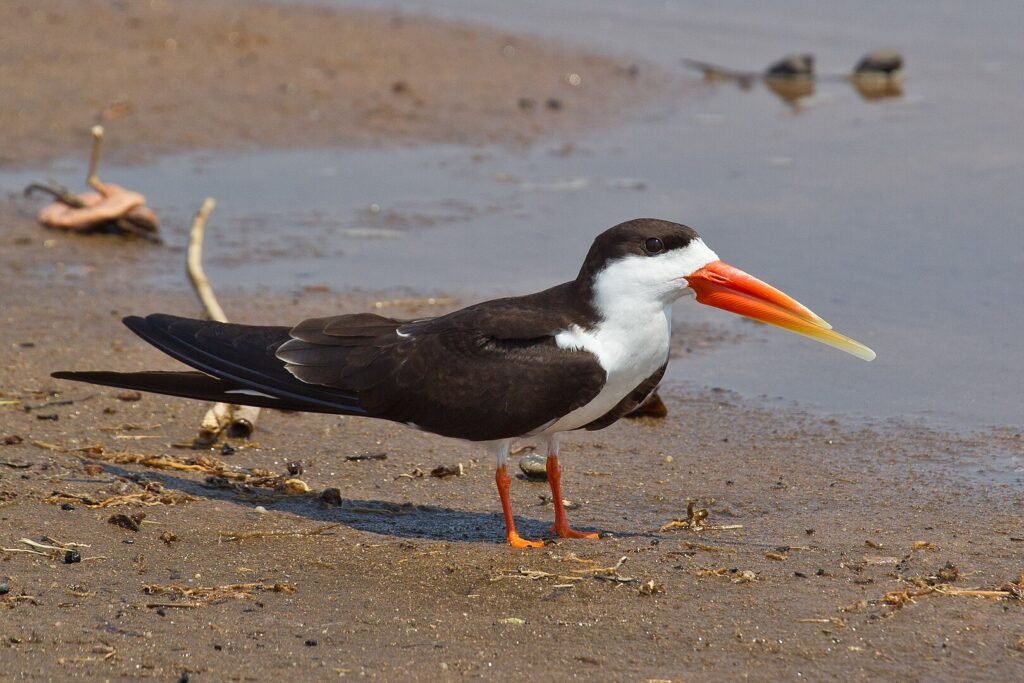
Animals Not Found in Akanda National Park:
- Large mammals like elephants and buffalo
- Chimpanzees
- Species like sitatungas and bushpigs (under significant hunting pressure due to proximity to Libreville)
Economic Activities in the Region:
Hunting is a year-round economic activity, unaffected by seasons, specific animal species, or forest regulations. The primary tools employed in this practice are 12-gauge shotguns and cable traps. The targeted animals include duikers (Cephalophus), antelopes, porcupines, and bushpigs. The vast majority of the game harvested is sold, as reported by ASF in 2010.
Artisanal logging, an exclusively male-dominated practice, is conducted throughout the year, with a preference for the dry season to facilitate the transportation of processed planks on-site. Human carriers are employed for transportation purposes. The harvested wood, primarily the Okoumé species (Aucoumea klaineana), serves both local needs, such as constructing village houses, and commercial purposes. This activity has the potential to generate a monthly income of 350,000 XAF for those engaged in it, according to ASF’s 2010 report.
Impact of Illegal Hunting on Akanda National Park:
Illegal hunting emerges as a severe and immediate threat to the diverse wildlife residing in Akanda National Park. The unlawful activities, predominantly centered around bushmeat and ivory, are perpetrated by individuals from both neighboring countries and local communities. This illicit poaching has resulted in substantial and enduring harm to the populations of various species, unsettling the fragile equilibrium of the park’s ecosystem.
The encroachment of human activities, particularly fishing and logging, is a growing concern for environmental protection associations. The increasing anthropogenic pressure is notably driven by individuals seeking to exploit the park’s resources for commercial gains. The close proximity of Akanda Park to the Gabonese capital has attracted a rising number of fishermen and loggers engaging in activities within the park. Subsequently, the products derived from these activities, such as smoked fish, boards, and firewood, find their way to the city for sale.
The escalating human presence within Akanda Park is a matter of considerable concern. Since 2007, the park has held the designation of the Ramsar site of the Akanda National Park, emphasizing its international importance for conservation efforts. However, the persistent challenges posed by illegal activities and increasing human impact underscore the pressing need for effective conservation measures to safeguard the park’s unique biodiversity and delicate ecosystems.
Climate Overview of Akanda National Park:
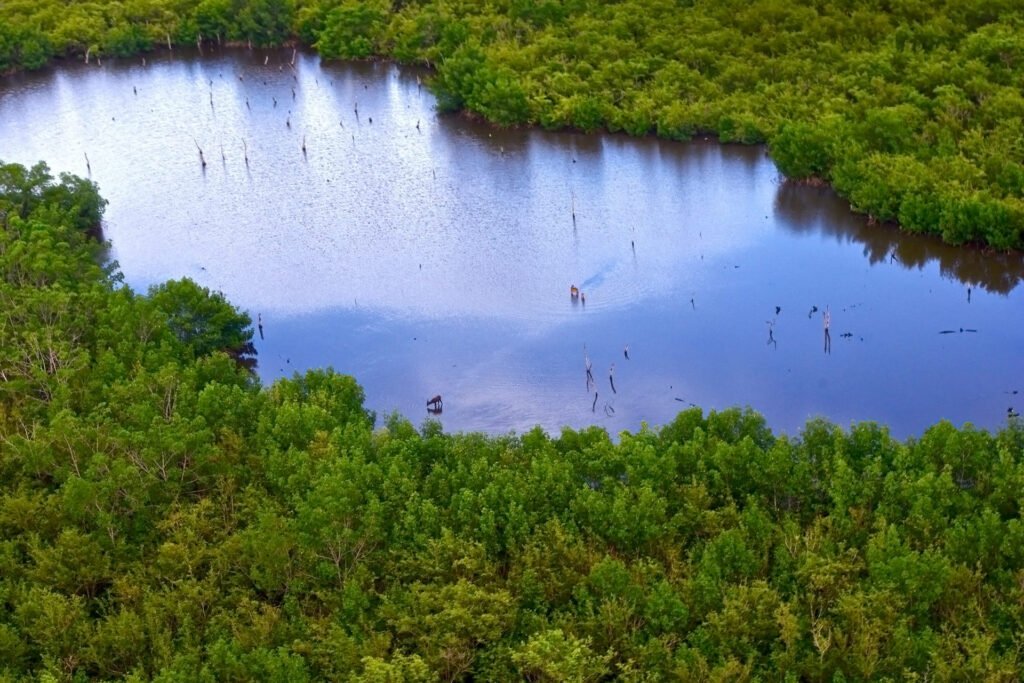
Akanda National Park features a transitional equatorial climate, marked by distinct seasons:
Major Rainy Season (October-December):
Characterized by significant and prolonged rainfall.
Lush greenery prevails during this period.
Minor Dry Season (January-March):
Experiences a reduction in precipitation.
Conditions are relatively drier compared to the major rainy season.
Minor Rainy Season (April-June):
Witnesses another period of increased rainfall.
Vegetation flourishes with renewed moisture.
Major Dry Season (July-September):
Notable for a pronounced reduction in rainfall.
Dry conditions prevail, and vegetation may experience some degree of stress.
The park maintains high humidity levels throughout the year, contributing to its rich biodiversity. The annual rainfall ranges from 3000 to 3300 mm. Average annual temperatures hover between 25-26°C, providing a consistently warm climate.
For visitors, May and June offer a cooler climate compared to other months, making this period particularly favorable for exploring Akanda National Park.
Enriching Activities at Akanda National Park:
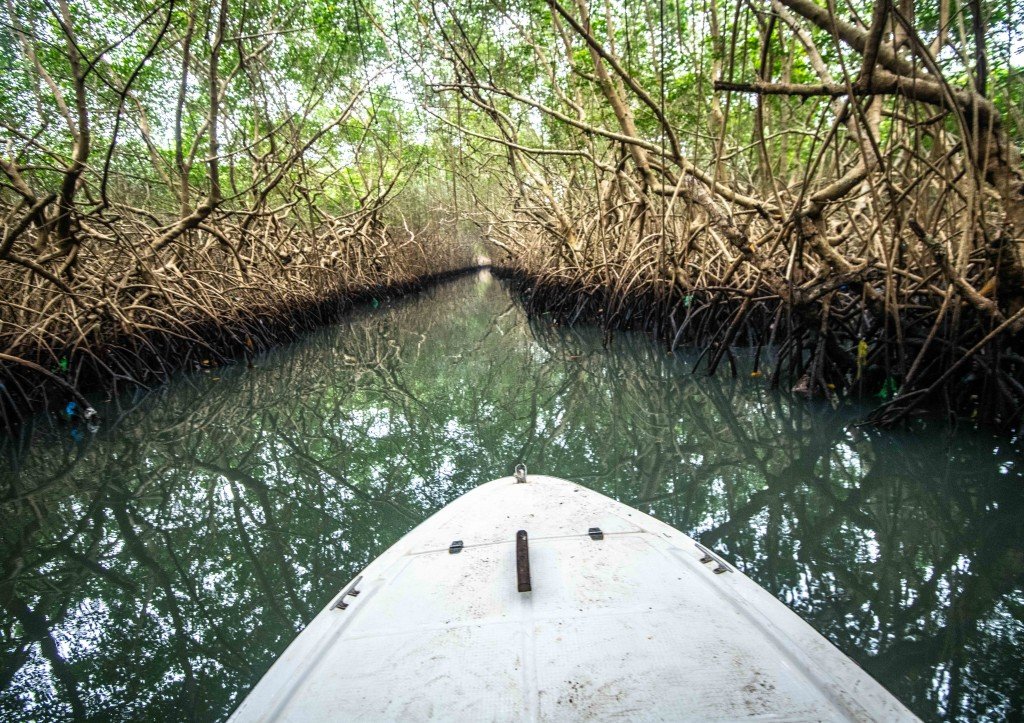
Explore the Marvels of Mangroves:
Embark on a mesmerizing boat ride through the intricate waterways of the park’s marine mangroves. Witness the unparalleled beauty of these coastal ecosystems, discovering the unique flora and fauna that call the mangroves home. Gain insights into the vital role mangroves play in maintaining ecological balance.
Discover Avian Wonders on Beach Walks:
Stroll along the pristine beaches of Akanda National Park, where nature unfolds its breathtaking spectacle. Witness the awe-inspiring sight of birds, including nesting turtles, gracing the shoreline. The beach walks provide an intimate encounter with the vibrant birdlife and offer glimpses of turtles engaging in the nesting ritual. Immerse yourself in the serene ambiance of the coastal landscape.
Safari Adventures in Savannah and Forest:
Embark on a thrilling journey through the park’s savannah and lush forests. Traverse the expansive savannah, where forest buffalos and antelopes roam freely. The experience is nothing short of amazing as you witness these magnificent creatures in their natural habitat. The guided safari unveils the rich biodiversity of Akanda, creating lasting memories of the untamed wilderness.
